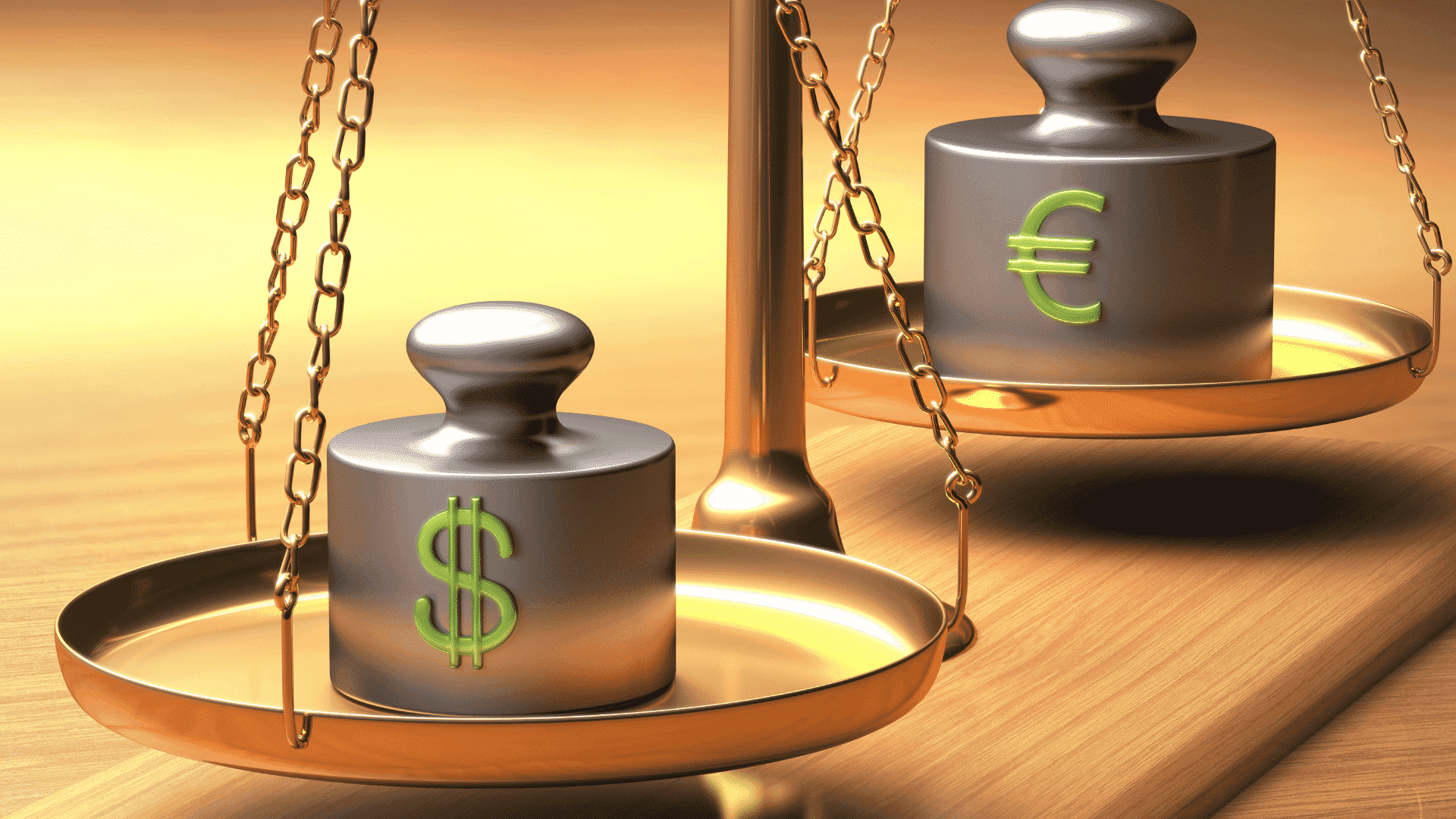On Wednesday, the Euro and the dollar achieved parity, or a 1:1 exchange rate. It was only in 2002 that the value of the two currencies was equal.
Parity in international trade refers to the exchange rate at which the purchasing power of the currencies of two nations is roughly equal. Theoretically, currency exchange rates can be established at a parity or par level and modified as economic conditions change in order to maintain parity. Price fluctuations in the market can be used to make adjustments as supply and demand situations change. These adjustments happen inevitably if exchange rates are permitted to vary unrestrictedly or over a wide range.
Since July 15, 2002, the value of the Euro has never fallen below $1. It fluctuates constantly, but this week it has occasionally fallen by less than a dollar.
Shortly after its debut on January 1, 1999, the Euro reached an all-time high of $1.18. However, it subsequently started a sustained decline, breaking through the $1 threshold in February 2000 and reaching a record low of 82.30 cents in October 2000. In 2002, it surpassed parity as the dollar suffered from significant trade deficits and Wall Street accounting scandals.
What seems to be a euro story now, as it was then, is also in many ways a dollar tale. This is due to the U.S. dollar's continued dominance as the default currency for global trade and central bank reserves. Along with the Euro, the dollar has been rising to 20-year highs versus all of its main trading partners' currencies.
The dollar is also gaining from its reputation as foreign investors' primary currency to invest given it's a safe haven during difficult times.
The parity approach is like getting a 15% discount.
Only 19 out of the 27 members of the European Union utilize the Euro as their official currency.
Austria, Belgium, Cyprus, Estonia, Finland, France, Germany, Greece, Ireland, Italy, Latvia, Lithuania, Luxembourg, Malta, Netherlands, Portugal, Slovakia, Slovenia, and Spain are among those nations.
On Wednesday morning, the Euro to the U.S. dollar achieved parity, meaning a 1:1 exchange rate.
The Euro briefly traded for $0.9999 before beginning a slow recovery. At 10:40 a.m., it was trading at $1.0058. E.T.
Why is Euro Weakening Today?
The prolonged conflict in Ukraine has stoked concerns about an oil shortage and a recession while rising U.S. interest rates have driven investors away from the Euro and toward the dollar, which have both contributed to the relative depreciation of the Euro.
Many economists blame the Euro's decline on anticipations of swift U.S. interest rate increases. Federal Reserve to combat inflation, which on Wednesday touched a yearly 9.1 percent high, a 40-year high.
Rates on interest-bearing investments often increase in tandem with increases in interest rates set by the Fed. Higher interest rates will entice investor capital from euro-denominated investments into ventures denominated in dollars if the Fed hikes rates more than the European Central Bank. To purchase those holdings, those investors will have to sell their euros and buy their dollars. As a result, the Euro declined, and the dollar rose.
The European Central Bank (ECB) has indicated that interest rates will go up next week and again in September. However, the ECB's ongoing rate increases may come to an end if the economy enters a recession. The American economy appears to be doing better, so the Fed may continue to tighten while also widening the rate differential.
How can you benefit from favorable exchange rates?
When it's feasible, Americans and other nationalities who want to benefit from the favorable exchange rate should utilize a credit card without a foreign transaction fee. According to Rathner, these fees can raise the price of each purchase by up to 3 percent, negating the benefits of the euro-dollar exchange rate.
She suggested bringing a second credit card (if you have one) in case your original one wasn't recognized by all businesses. According to Rathner, this is typically caused by the different card brands. While Visa and Mastercard are commonly accepted worldwide, this isn't always the case with American Express and Discover.
Additionally, tourists who reserve hotels or tours in advance (and have the choice of being charged now or later) may choose to pay now to ensure they're benefiting from the discounted price. It's not a given that the exchange rate will keep improving.
According to experts, cash-only travelers should normally avoid converting their currencies before a trip. The majority of the time, it is unneeded and will result in a lower conversion rate.
Instead, experts stated that tourists often receive a better rate when making withdrawals from an ATM in their country of destination.
Who loses?
When and if American enterprises that conduct significant business in Europe transfer those profits back to the U.S., the revenue from those businesses will decline. The exchange rate is less important if euro revenues are used to pay for expenses in Europe.
A major concern for the United States is that a higher dollar increases the cost of American goods in international markets, worsening the trade imbalance and lowering economic production while giving foreign goods a pricing advantage in the country.
The European Central Bank may experience difficulties as a result of a lower euro since it may result in higher pricing for imported goods, especially oil, which is priced in dollars. The ECB is already under pressure from several angles. It plans to raise interest rates, the traditional treatment for inflation, but doing so could hamper economic development.
Will the Euro continue to fall?
What central banks do in response to this question will determine the answer. The U.S. Federal Reserve is raising rates more aggressively than the ECB, which encourages investors to focus more of their capital on the U.S. dollar, increasing its value relative to other currencies. The inflation issue is a global occurrence, but it differs between the different regions, particularly between the United States and Europe, according to both its intensity and its causes. Because of this, the Federal Reserve changed its monetary policy more forcefully and earlier than the European Central Bank.
For more information on Vista Residences, email [email protected], follow @VistaResidencesOfficial on Facebook, Twitter, Instagram, and YouTube, or call the Marketing Office at 0999 886 4262 / 0917 582 5167.










